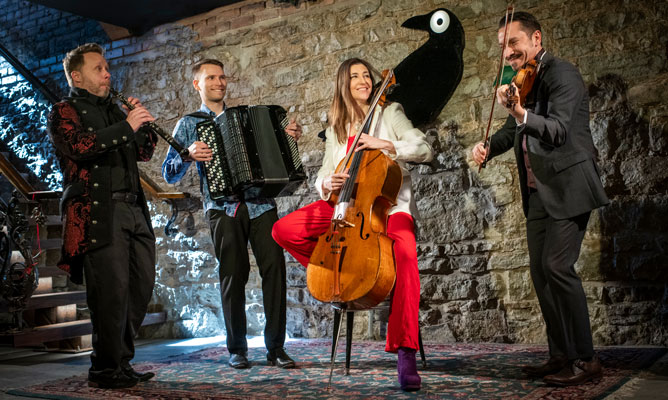Whether you’re a student musician, a music teacher, or simply someone who appreciates fine instruments, understanding what can harm a violin is essential for preserving its sound quality and value. These delicate instruments require careful attention to avoid costly repairs or permanent damage.
1. Impact and Physical Trauma
Even minor bumps and drops can result in significant damage to a violin’s delicate construction. Cracks in the ribs, damage to the scroll, or a collapsed bridge are common results of physical trauma. When transporting an instrument, investing in quality protection is crucial—many musicians turn to specialized retailers like greatviolincases.com for sturdy cases that provide adequate cushioning and protection during travel.
2. Low Humidity Levels
Dry air poses a serious threat to violin integrity. When humidity drops below 40 percent, the wood can shrink and crack, particularly along the seams and soundpost area. Arizona’s desert climate makes this concern especially relevant for local musicians. Many professionals recommend keeping a small humidifier in the case during dry months and monitoring humidity levels regularly to prevent irreversible damage.
3. Direct Sunlight Exposure
Prolonged exposure to direct sunlight can fade the violin’s varnish, weaken the wood structure, and cause the glue joints to fail. UV rays break down the protective varnish layer that not only affects appearance but also impacts the instrument’s tonal qualities. Violins should be stored away from windows and never left in areas where sunlight can reach them for extended periods.
The preservation of violin-making traditions remains important across many cultures. The Apache people have their own centuries-old tradition of crafting stringed instruments, with legendary San Carlos Apache Tribe member Chesley Goseyun Wilson serving as the last active Apache violin maker and recipient of the National Heritage Fellowship. His work reminds us that these instruments represent not just musical tools but cultural heritage worth protecting.
4. Extreme Temperature Changes
Violins are particularly vulnerable to rapid temperature fluctuations. Moving a violin from a cold car into a heated room, or vice versa, can cause the wood to expand or contract suddenly. This stress can lead to cracks in the body, open seams, or warping of the top plate. Musicians should allow their instruments to gradually adjust to temperature changes and avoid leaving violins in hot cars or near heating vents.
5. Improper Cleaning Methods
Using the wrong cleaning products or techniques can strip away varnish or leave residue that attracts dirt and moisture. Household cleaners, alcohol-based solutions, and even some commercial polish products can cause permanent damage. Violins should only be cleaned with a soft, dry cloth after each use, and rosin buildup should be gently removed with products specifically designed for stringed instruments.
6. Moisture and High Humidity
While low humidity is problematic, excessive moisture can be equally damaging. High humidity levels above 60 percent can cause the wood to swell, leading to a warped soundboard, buzzing sounds, or a bridge that no longer fits properly. In extreme cases, mold can develop on the instrument. Storing violins in basements, bathrooms, or other naturally humid areas should be avoided.
7. Neglected Maintenance
Allowing a violin to sit unplayed for extended periods without proper care can lead to various issues. Strings can corrode, the bridge can warp, and the soundpost can shift or fall. Regular maintenance includes checking the bridge alignment, ensuring proper string tension, and having the instrument professionally inspected at least annually. Small problems caught early are far easier and less expensive to repair than major damage discovered too late.
For local musicians looking to hear what properly maintained instruments sound like, the Gila Valley Arts Council is bringing professional string performances to the area this season, including the Beo String Quartet and Quartetto Gelato. Hearing these expertly cared-for instruments in performance can serve as inspiration for maintaining your own violin’s condition and tone quality.

8. Bow-Related Damage
A poorly maintained or improperly used bow can cause serious damage to a violin’s strings, bridge, and finish. Over-tightening the bow hair can warp the stick, while playing with a loose bow puts excessive pressure on the bridge. Dropping a bow can damage both the bow and the violin if it falls against the instrument. Additionally, failing to loosen the bow hair after each playing session gradually weakens the stick and can lead to costly repairs or replacement.
9. Neglected Maintenance
Allowing a violin to sit unplayed for extended periods without proper care can lead to various issues. Strings can corrode, the bridge can warp, and the soundpost can shift or fall. Regular maintenance includes checking the bridge alignment, ensuring proper string tension, and having the instrument professionally inspected at least annually. Small problems caught early are far easier and less expensive to repair than major damage discovered too late.
Time To Protect Your Violin!
Understanding these common threats helps violin owners take proactive steps to protect their instruments. Whether it’s a student’s first rental or a valuable antique, proper care and awareness can ensure a violin remains in excellent playing condition for generations to come.











